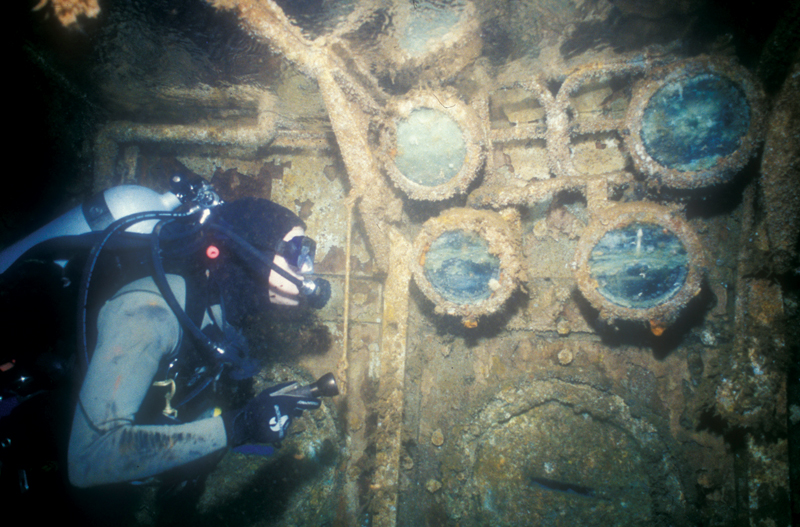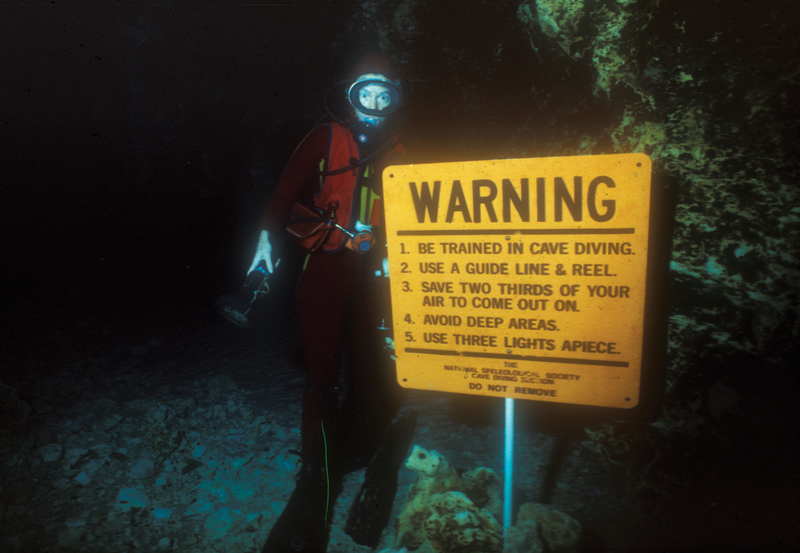WHY DIVERS DIE
Technical diving is considered more hazardous than standard recreational diving. Why? Because many divers, including some exceptionally experienced divers, have died while participating in advanced diving activities. What caused these accidents, and how can we prevent them?
There are many types of technical diving. The best studied is cave diving, with over 650 fatalities in the most recent review of the data. Early pioneers of the activity took an active interest in systematically examining incidents, and tried to develop general causes of those accidents. This became known as “Accident Analysis,†and it formed the basis of cave diving instructional programs in the United States.
Continued review of fatalities and near misses has added knowledge, and has further defined contributory causes to accident analysis. While these studies looked primarily at cave diving, and some of those factors are specific to cave diving, reviews of fatalities in other environments are applicable in other types of technical diving, as well.
Takeaways from this research:
- Be trained in the type of diving you are doing: The primary cause of fatalities is exceeding the level of training. In cave diving, this often means entering overhead environments without any specialized training. In fact, about two-thirds of all cave diving accidents involved people who had no training at all. Another 25% were exceeding their level of training at the time they perished.In all types of diving, it is common for divers to “try†a type of diving before seeking training. As an example, think of someone you might know who “tried†a decompression dive or set a personal “deepest†dive before receiving specialized training in these activities. Training levels were exceeded in more than 90% of all fatalities, pointing to the importance of receiving adequate training beforestarting technical diving activities.Environmental conditions often contribute to accidents. In cave diving, lack of direct access to the surface and darkness are obvious considerations. Others include silting, depth, and currents. In cave diving, environmental issues led to the development of the next four rules of accident analysis in cave diving: guideline use, Third’s Rule, deep diving, and lights.

- Utilize a continuous guideline to where an uninterrupted ascent to the surface may be made:Cave and wreck divers must be able to exit from either the cave or wreck before they can return to the surface. To do this, they must be able to find their way out, despite branching passages, sediment obscuring visibility, loss of lights, or other issues. Persons working from fixed anchor or up lines whose safety are dependent on reaching those locations, and saturation divers working from fixed habitats on the bottom face similar navigational challenges.Guidelines are mandatory in cave diving, and in my opinion, most wreck diving as well. While wreck diving-enthusiasts utilize a “progressive penetration†rule for their penetrations, I feel the use of guidelines is essential for all but the most limited penetrations. Guidelines can assist in many types of technical diving, both with navigational issues, as well as with reducing stress.
- Reserve a minimum of two-thirds of your initial gas supply for exiting: This is called the “Rule of thirds,†and is the basis for gas management for many technical- diving activities. The general concept is you use one-third of your gas entering, one-third exiting, and save one-third to cope with any unexpected emergencies or contingencies. Setting penetration distances based on air consumption is the primary way cave divers meter out their air and the duration of their dives.Utilizing air rules is a common practice for limiting dive distances or times in other technical-diving activities as well. A future column will be devoted to examining these gas-management rules.
- Avoid deep diving on air:Depth was the primary reason experienced cave divers died. Before Trimix was readily available, air was used to explore even very deep caves. Dives on air to depths exceeding 250 feet were not uncommon, and fatalities often resulted from situations exacerbated by nitrogen narcosis. The rule was once stated as “Do not dive deeper than 150 feet,†but even that depth limit has resulted in hazardous situations.Similar problems have been seen in open water. One of the most common ways for divers to compare their “experience†or “competence†with other divers was to see who had been the deepest. “How deep have you been?†was the first question often asked upon meeting a new diver. This pressure to go deep led to many incidents. It still does. Deep diving can be pursued with a reasonable degree of risk, but only if the participants have proper training and equipment.
- Carry at least three lights per person:Caves are almost 100% pitch black. Wrecks, too, can contain areas with no natural light at all. But we need light to swim or move efficiently through passageways, to communicate, and to efficiently handle equipment. It makes no difference if we are cave diving, wreck diving, deep diving, or night diving. Redundant lights allow us to safely terminate a dive if we lose our primary light. Numerous fatalities in caves stemmed from divers who could not see when their only light failed.These rules constitute the “classical†rules of accident analysis. They were identified in the 1970-80s. In the next issue, we will look at additional contributing causes to cave diving fatalities that have been identified in the last decade. We will find that these apply even more strongly to other modes of technical diving. Until then, safe diving!
———————————————————————————————————————————————————-
Words and Photos by Jeff Bozanic. This article appeared in the May/June 2012 issue of California Diver Magazine.
– See more at: http://californiadiver.com/why-divers-die/#sthash.Q6g5Y9d1.dpuf
